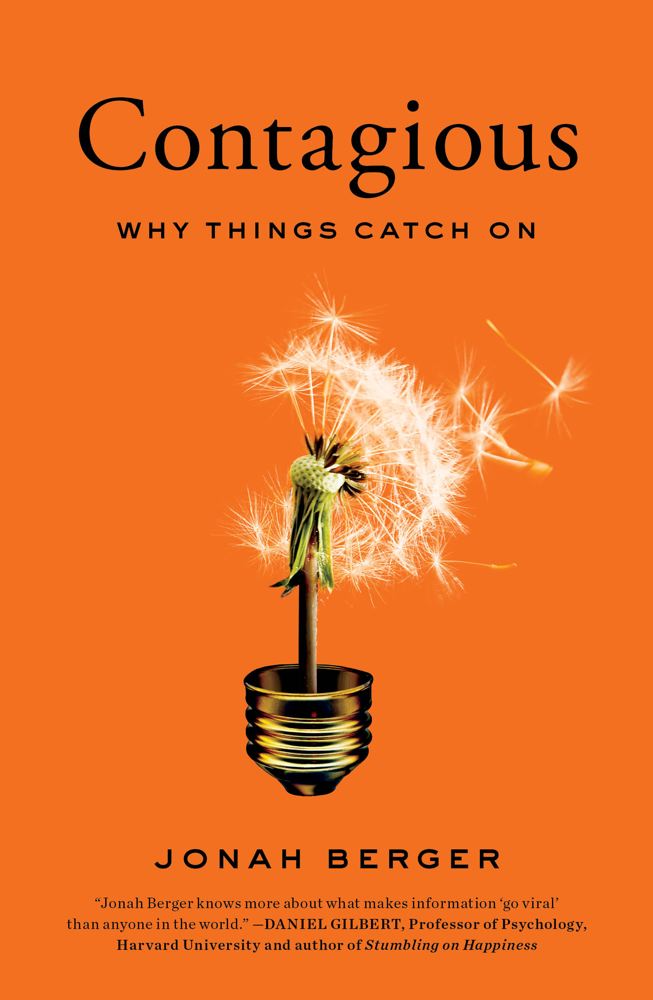Tips for Viral Marketing
What is viral marketing?
A definition of viral marketing might look something like this: marketing techniques that use social networking services and other technologies to try to increase brand awareness or to achieve other marketing objectives (such as product sales) through self-replicating viral processes, similar to the spread of viruses or computer viruses. It can be delivered by word of mouth or enhanced by the network effects of the Internet and mobile networks. Most of the most successful viral campaigns circulating online are ads paid by a sponsor company, launched either on their own platform (e.g. a company webpage or social media profile) or on social media websites such as YouTube.
Why do things go viral? How do things go viral?
So what do successful viral marketing campaigns do differently? In Contagious: Why Things Catch On, Jonah Berger dives into the world of virality and tries to pick apart why certain ideas, messages, and products spread and go viral while others do not. He identifies six commonalities among things that go viral. Together they form a handy acronym: STEPPS.

STEPPS stands for:
· Social Currency
· Triggers
· Emotion
· Public
· Practical Value
· Stories
Social currency. We share things that make us look good or help us compare favorably to others. So to get people talking, companies and organizations need to look to mint social currency. Exclusive restaurants utilize social currency all the time to create demand. Another example is how Snapple included interesting facts on their bottle caps. People shared these facts because it made them seem interesting to others.
Triggers. Ideas that are “top of mind” and “tip of tongue” spread. If there are easy-to-remember cues that are built into a product and can trigger it to come to mind, then it has a strong trigger. Much like parasites, viral ideas attach themselves to top of mind stories, occurrences or environments. For example, Mars bar sales spiked in 1997 when NASA’s Pathfinder mission explored the red planet. Connect your message to a situation that your kind of customer frequently experiences so it triggers them to think of your brand whenever they are in that situation.
Emotion. When we care, we share. Jonah looked at data from the New York Times most emailed list to discover that certain high arousal emotions can dramatically increase our need to share ideas. High arousal negative emotions like anger or anxiety spur us to share messages with others, like the outrage triggered by Dave Carroll’s “United Breaks Guitars” video. High arousal positive emotions like awe, excitement, amusement, and humor can also have the same effect. Susan Boyle’s unexpected singing performance, for example, evoked awe and 100 million views within nine days. However, low arousal positive emotions in response to a message, such as contentment, actually stop us from passing them along.
Public. If it’s built to show, it’s built to grow. People tend to follow others, but only when they can see what those others are doing. Ideas need to be public to be copied. Baristas put money in their own tip jar at the beginning of a shift to make it seem like many people are leaving tips. The next customer to come around sees this and is more likely to follow the crowd and leave a tip. Another example of this is the Ice Bucket Challenge, the ALS donation campaign that went viral on Facebook. People were more likely to join in when they saw so many others on their Facebook newsfeeds doing it.
Practical Value. Humans love the opportunity to give advice and offer tips but especially if they offer practical value. It’s why we ‘pay it forward’ and help others. Sharing is caring. If your product or service provides practical value it is more likely to be shared.
Stories. People do not simply share information, they tell stories. Stories are like Trojan horses: vessels that carry ideas, brands, and information. An important consideration is that, in order to benefit the brand, stories must not only be shared but also relate to a sponsoring company’s products. Evian’s roller baby video netted 50 million views but did little to stem the company’s 25% drop in sales.
These six ideas can be employed by marketers of all stripes to improve the visibility of their products and services. By using the principles that Berger lays out in Contagious, companies can increase the chances that their brand messages spread virally and reach a wider audience.
